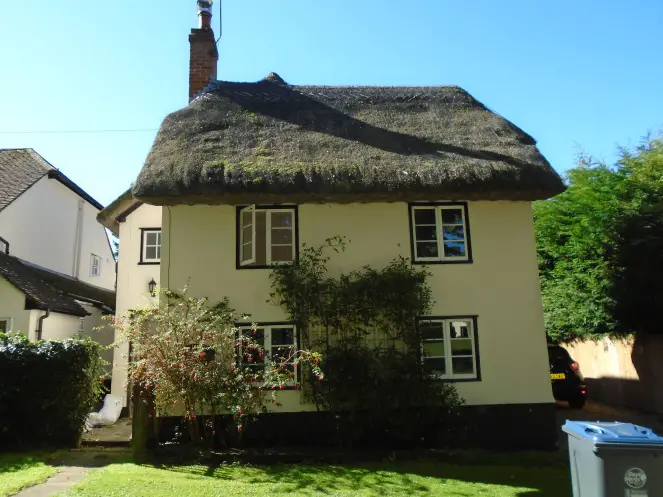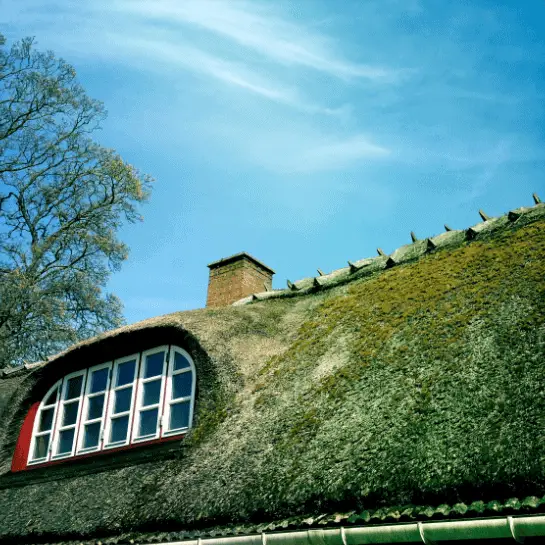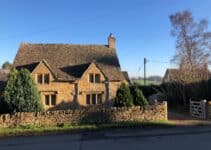Since most thatched cottages are very old, they frequently feature expansive grounds and are situated in prime areas. This is because there were many suitable locations to develop such buildings, given their age.
But are thatched cottages damp? Thatched properties are frequently found on protected, gently sloping soil with appropriate drainage. This decreases dampness issues.
But because these homes have old, thick walls and bases and no damp-proofing, the walls inside may get damp from moisture rising from the ground.
When it rains, rain tends to flow down the roof and in a steady stream around the house (gutters are uncommon on thatched homes), continuing for a while even after the downpour has stopped.
Raindrops spilling on the ground may cause mud stains to form on the front of a house, in addition to possibly producing green mold development. This, however, is easily remedied by cleaning with a bleach solution.

Damp Thatched Roof
A thatched cottage with rotting thatch and a wet thatch layer is not ideal for living in or selling. In actuality, it’s a frequent problem.
However, there are a few remedies to this issue. The first step is to speak with a specialist about what should be done to get the thatch to dry out once more.
- This can be accomplished by either removing the moist layer or adding a new one. It might even include removing the entire thatch layer.
- The second option works, but it’s not the best: put a plastic sheet over the roof until the thatch gets dry. This is not an option for those who reside in their cottages because the plastic would retain moisture and encourage mold formation.
- Because they will need to keep clearing snow off the plastic and run the danger of ruining it, it is also not appropriate for persons who live in regions with severe winters or a lot of snowfall.
- A compromise between these options will often be chosen: partial thatch layer replacement or repair instead of complete thatch layer replacement.
- This enables companies to stretch out their costs over time and take care of maintenance problems as they come up.

Damp Walls in Thatched Cottage
The surveyor should conduct increasing damp tests to identify the intensity of this issue. Various heights above ground are used to gauge the moisture content of the walls to accomplish this.
Walls that exhibit a lot of moisture or are quite wet inside indicate that the cottage has a dampness problem.
The most likely explanation is that cement was once used to re-render the original stone walls, possibly within the last 50 years.
Cottages were traditionally completed with materials based on lime, which promotes more natural moisture absorption and evaporation—the less expensive option of cement seals in the moisture that causes rising dampness.
Re-rendering the entire cottage would be the ultimate answer. The walls inside and outside the cottage would need cement removed painstakingly, and lime-based mortar applied.
This will be quite expensive for you, but there is also the option of creating a french drain around the cottage to prevent moisture from getting into the walls.
Water had penetrated the walls by seeping through the thatch roof and into the ground below. If water keeps coming into the cottage, a french drain can help.

Final words
If you now own or plan to purchase a thatched cottage, it is best to evaluate both of these elements. Before making your decision, you should consider your budget because the repairs could be very expensive.
As was already mentioned, there are both short-term and long-term solutions you can try, depending on the problem’s severity and your resources.


